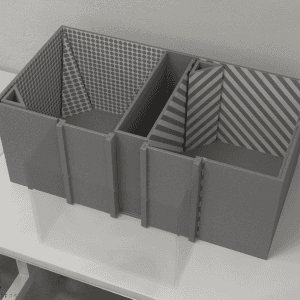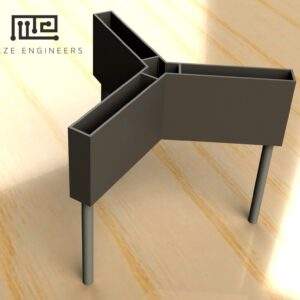$5,900.00 – $6,900.00
The rodent tremor monitor system from Maze Engineers serves to assess tremors in rodents, which are involuntary, rhythmic muscle contractions triggered by various factors. These include neurological conditions like stroke, multiple sclerosis, traumatic brain injury, or Parkinson’s disease; pharmacological issues such as mercury poisoning; and metabolic disturbances like hypoglycemia. This system is instrumental in diagnosing tremors definitively and monitoring their real-time response to treatment. It offers multiple chamber configurations with customizable specifications and dimensions.
Key parameters measurable with the rodent tremor monitor system include the type of tremor, its severity, and how it responds to treatment.
Here are some of the benefits of using a rodent tremor monitor system:

MazeEngineers offers custom-built behavioral mazes at no extra cost—designed to fit your exact research needs. Eliminate reproducibility issues from poor sizing or lingering scent cues with precision-engineered, modular, and smart mazes that adapt in real time to animal behavior. Publish new protocols, run adaptive experiments, and push the boundaries of behavioral science.



Mouse Features |
Sound attenuating chamber |
Mouse Enclosure |
Tremor Sensor |
Conduct software |
Rat Features |
Sound attenuating chamber |
Mouse Enclosure |
Tremor Sensor |
Conduct software |

Take advantage of Neuralynx, Ethovision Integration, SMS and Email integration with the Conductor Science Software. No I/O Boxes Required

The design of the Rodent Tremor Chamber integrates a sound-attenuating enclosure, rodent support apparatus, tremor detection sensor, and software suite for recording, analyzing, and exporting data.
Rodents modeled for tremors and control strains are securely positioned within the holder to facilitate precise tremor analysis.
For accurate rodent positioning, advanced video tracking software solutions like Noldus EthoVision, ANY-Maze, or BehaviorCloud can be utilized to monitor rodent movements within the chamber.
Set up protocol parameters using the Conduct software package, including experimental timing and other variables.
Introduce subjects into the rodent enclosure and provide a 10-minute habituation period.
Initiate tremor measurement using the Conduct software.
Record tremor frequencies and event counts, exporting the data to a PC for further analysis.
The following parameters can be measured using te rodent temor chamber:
The Rodent Tremor Chamber allows for ultra-sensitive measurements of tremor in rat and mouse models.
Gardner, D. R., Welch, K. D., Lee, S. T., Cook, D., & Riet-Correa, F. (2018). Tremorgenic Indole Diterpenes from Ipomoea asarifolia and Ipomoea muelleri and the Identification of 6,7-Dehydro-11-hydroxy-12,13-epoxyterpendole A. Journal of Natural Products, 81(7), 1682–1686. doi:10.1021/acs.jnatprod.8b00257
Paterson, N. E., Malekiani, S. A., Foreman, M. M., Olivier, B., & Hanania, T. (2009). Pharmacological characterization of harmaline-induced tremor activity in mice. European Journal of Pharmacology, 616(1-3), 73–80. doi:10.1016/j.ejphar.2009.05.031
| Species | Mouse, Rat |
|---|
There are no questions yet. Be the first to ask a question about this product.
Monday – Friday
9 AM – 5 PM EST
DISCLAIMER: ConductScience and affiliate products are NOT designed for human consumption, testing, or clinical utilization. They are designed for pre-clinical utilization only. Customers purchasing apparatus for the purposes of scientific research or veterinary care affirm adherence to applicable regulatory bodies for the country in which their research or care is conducted.